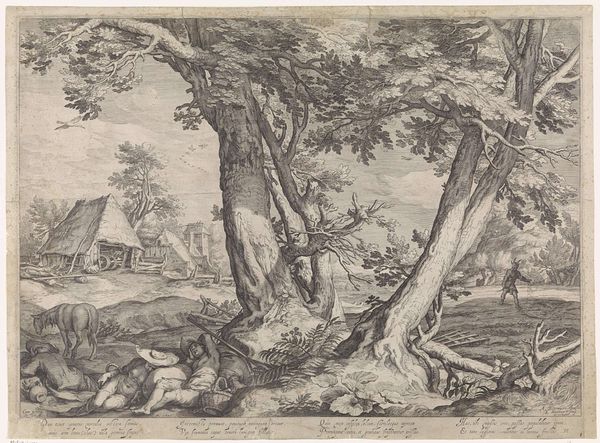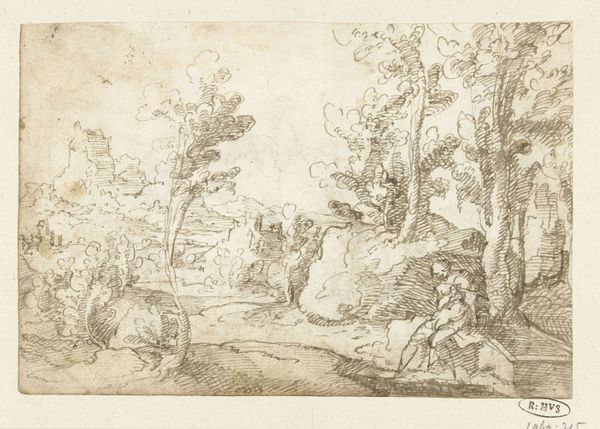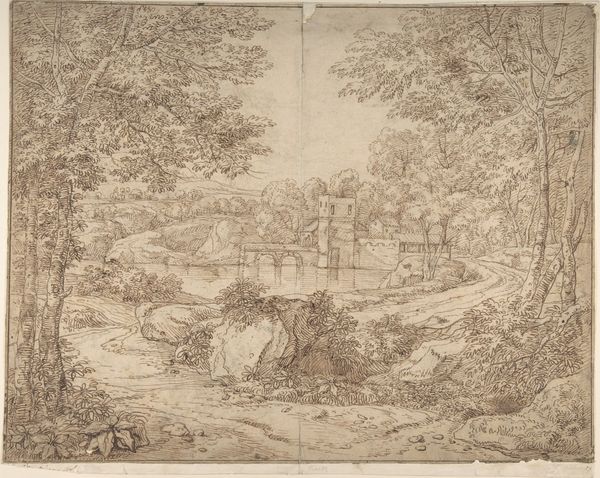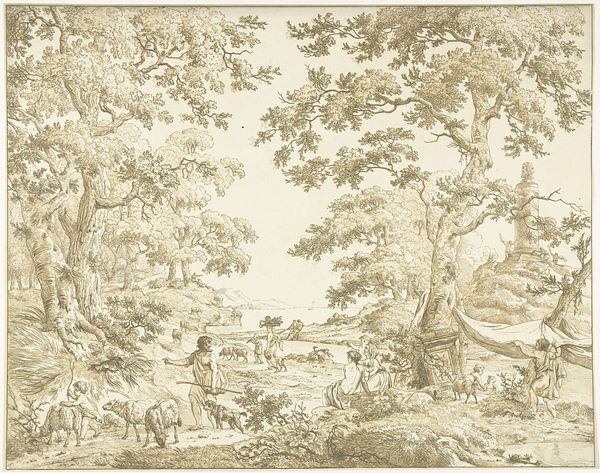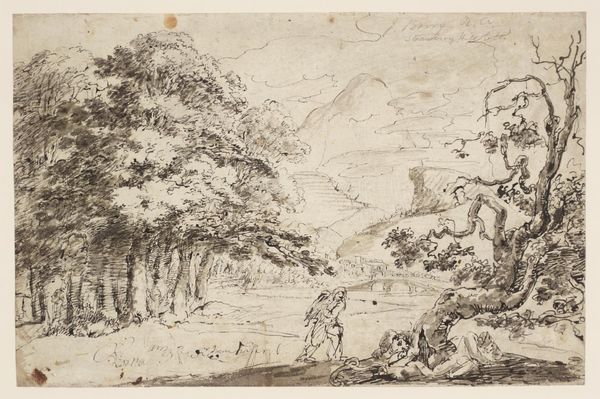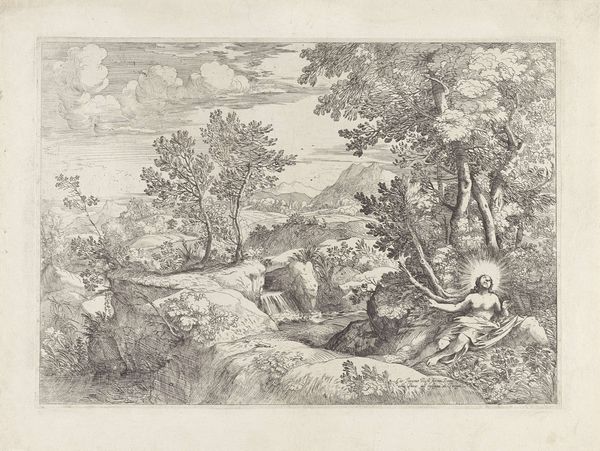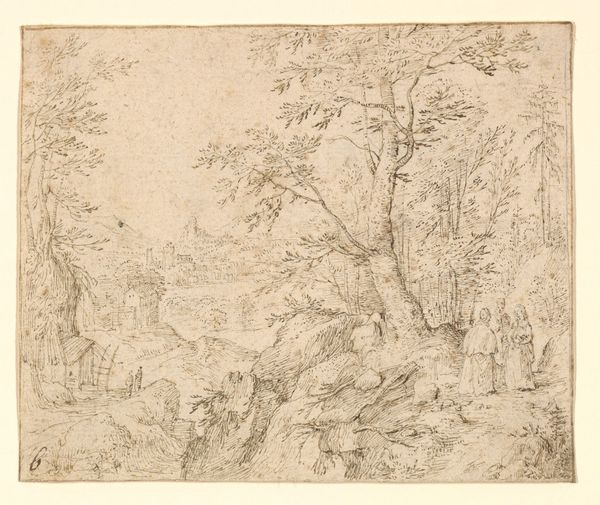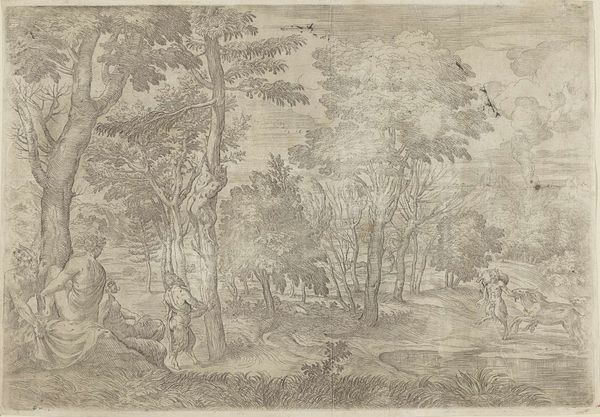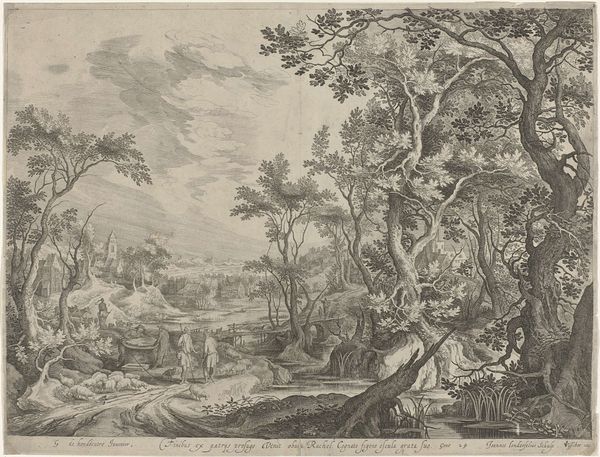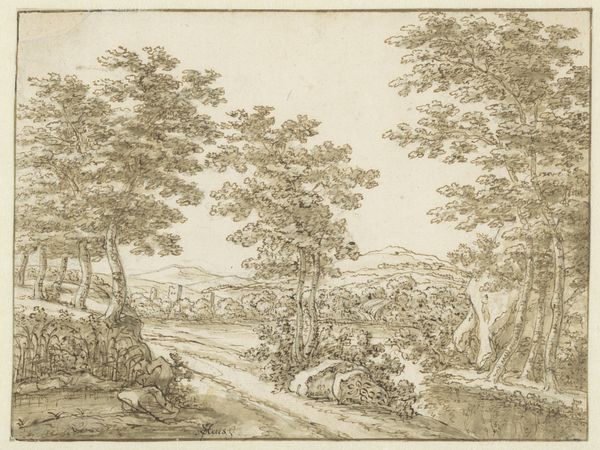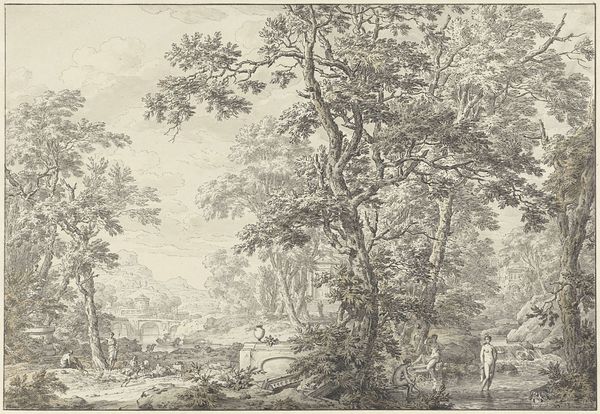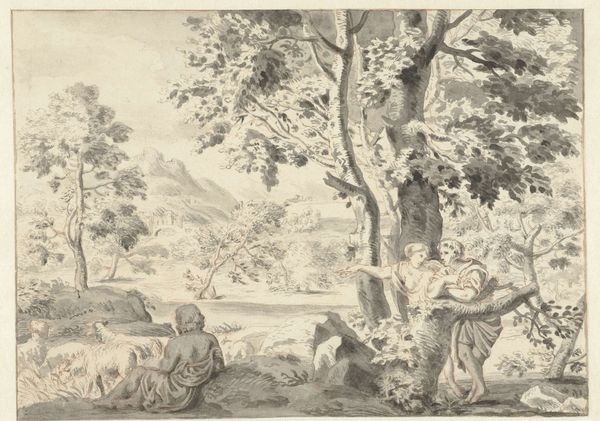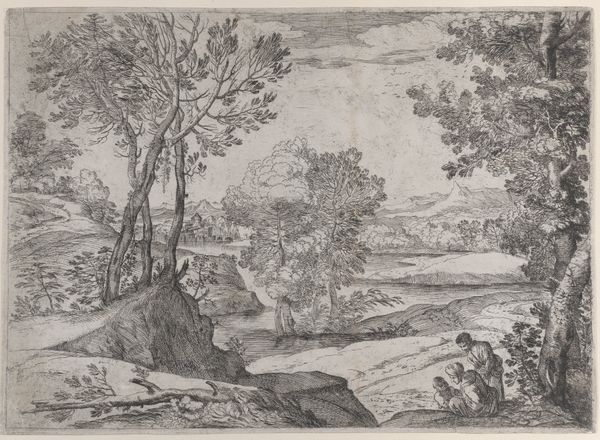
drawing, print, paper, ink
#
drawing
#
ink drawing
#
pen drawing
# print
#
landscape
#
paper
#
ink
#
northern-renaissance
Dimensions: height 204 mm, width 270 mm
Copyright: Rijks Museum: Open Domain
Curator: Welcome. Today, we are exploring "Wooded Landscape with a Brook," an ink drawing rendered circa 1583 by an anonymous artist. The work is held at the Rijksmuseum. Editor: My first impression? I feel as if I'm peering into a dream. The delicate linework creates such a soft, ethereal feel, almost as though the forest itself is breathing. Curator: Landscapes like this were not just pretty pictures, though! Remember, this period saw the rise of humanism and a renewed interest in the natural world, yet also continued artistic focus on symbolic narrative and moral instruction. A simple landscape wasn't so simple; it was about humanity's place within a divinely ordained world, rendered through print. Editor: Ah, that explains the quiet intensity! Looking closer, you really see how the artist captures the detail— the ruggedness of the trees, the shimmer of light on the water. There is such skill, rendered even in anonymity. I feel that. Curator: Absolutely. The medium of drawing, and specifically the burgeoning technology of print making, allowed these detailed views of nature to circulate widely. They served as models for artists, and shaped perceptions of landscape, conveying not just visual information but ideas about national identity. Editor: National identity even? Look at that brook. I am pretty sure I've sat by that brook myself at some point in time. It's more of a memory than a place, a little piece of forever. Curator: These landscapes contributed significantly to the development of Netherlandish landscape painting as a distinct genre, free from overt religious or historical narratives. The drawing encapsulates a very specific cultural moment. Editor: I can see how something seemingly simple gains importance from this new angle! Curator: Precisely. When viewing the work as an historical artifact we also recognize it embodies socio-political conditions; what a work omits is also important. The working class in this setting is almost entirely ignored in this landscape! Editor: What a view though—this print makes the everyday somehow feel both monumental and deeply personal. Curator: It’s amazing to note the way that cultural significance lingers through the ages, subtly embedded in those pen strokes.
Comments
No comments
Be the first to comment and join the conversation on the ultimate creative platform.
